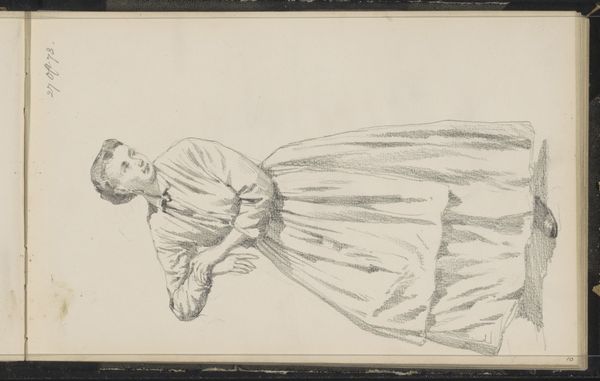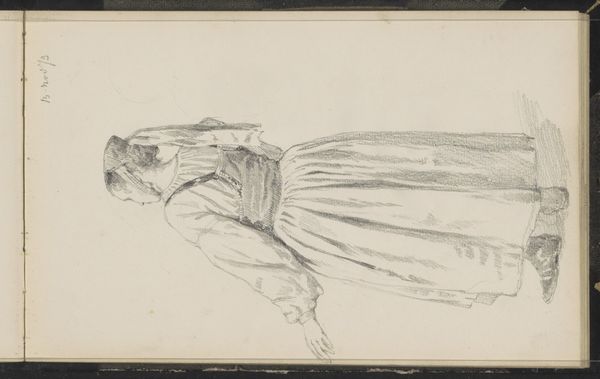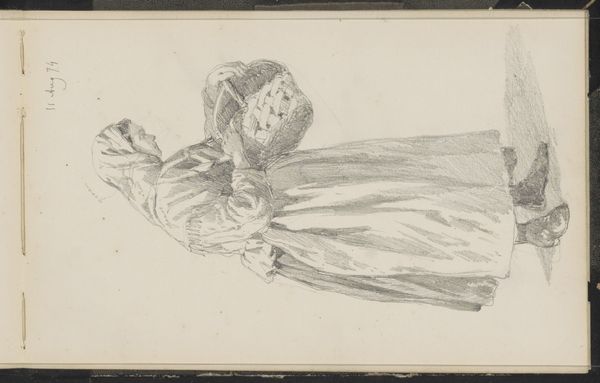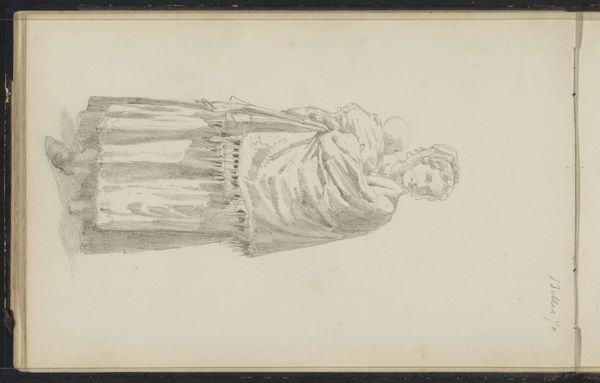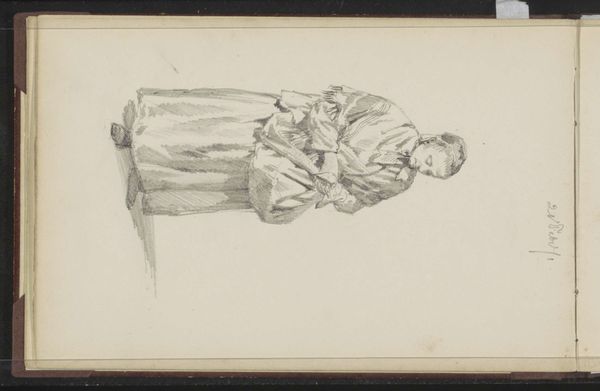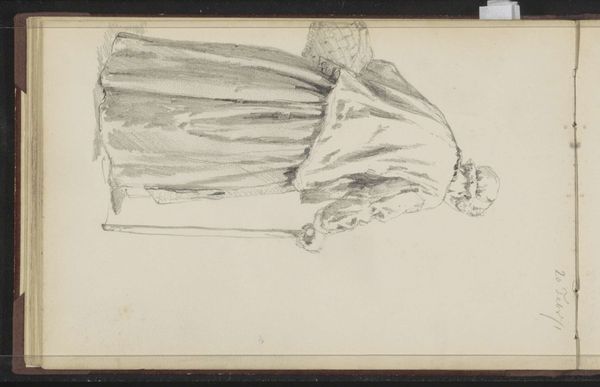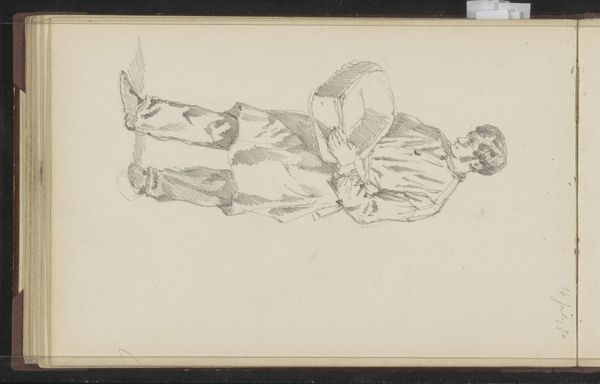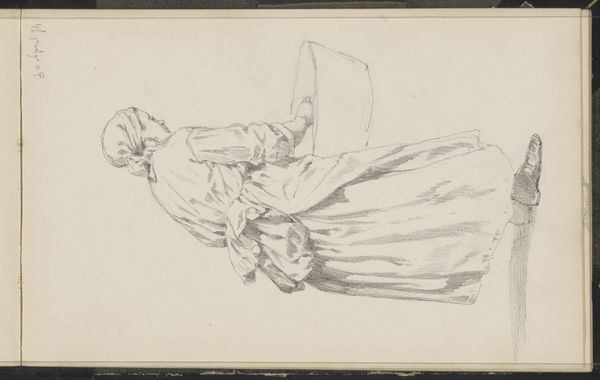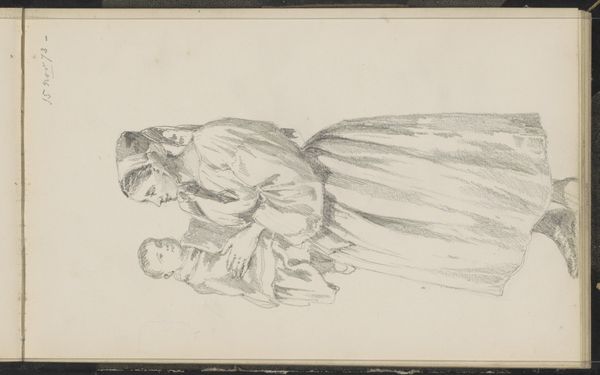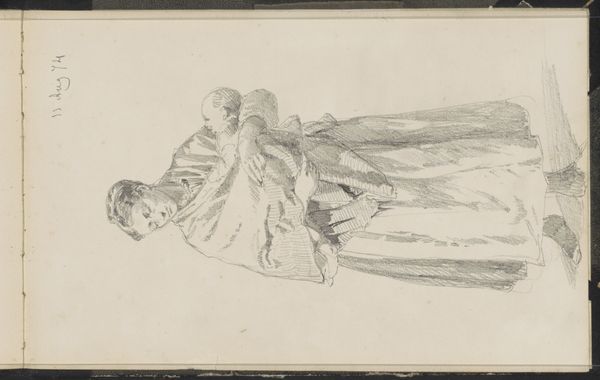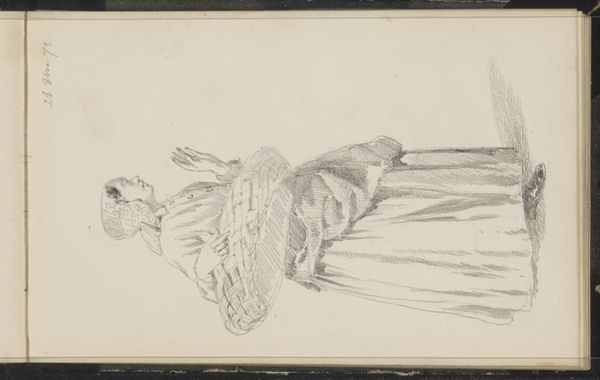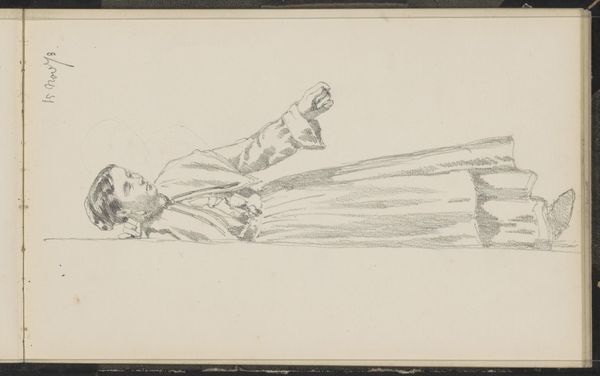
drawing, pencil
#
portrait
#
drawing
#
figuration
#
pencil
#
realism
Copyright: Rijks Museum: Open Domain
Editor: This drawing, "Woman with a Basket on Her Arm" by Cornelis Springer, possibly from 1873, done with pencil... it feels so delicate, almost fleeting, yet the woman seems weighed down. What do you see in this piece, particularly from a materialist perspective? Curator: The apparent lightness is deceptive. Consider the material constraints here: the graphite, the paper. Springer isn't simply representing a woman; he is *producing* an image of labor. A woman burdened, yes, likely carrying goods, rendered with what looks to be accessible materials, pencil on paper - tools reflecting common availability, hence mirroring wider patterns of laboring classes depicted. Editor: So, it's less about her emotional state and more about... who could access art making tools, and what that suggests about the subject being drawn? Curator: Exactly. And, furthermore, the basket, rendered in detail - what goods might it hold? And for whom were these goods destined? Wealthier patrons removed from physical work and thus fueling the markets where poor people made and carried wares, providing means for images like these? These are socioeconomic structures made visible by Springer’s choice of subject and rendering, isn't it? Editor: I see, the availability of both art materials *and* labor speaks to the relationship between classes at the time, laid bare by this humble pencil drawing. It makes you consider who benefits from the fruits-- or, you know, what's *in* the basket!-- of someone else's toil. Curator: Precisely. What starts as a seemingly simple portrait opens onto broader questions of production, consumption and class dynamics. These humble objects are a visual document.
Comments
No comments
Be the first to comment and join the conversation on the ultimate creative platform.

